Shanghai, an international metropolis, serves as the financial center of China. About 1/3 of imported cars, diamonds, wine, and dairy products, about 1/2 of imported cosmetics, medicines, and medical equipment, more than 60% of imported clothing, and more than 70% of imported watches come through the Shanghai port to the hands of consumers across China. Besides, Shanghai is also known as a tourist city. 40% of the foreign travelers choose Shanghai as their first stop in China. Take a look at this China tour from Shanghai. We will take you to Shanghai, Suzhou, Zhouzhuang, Huangshan, and Beijing. You will experience the fast development of Shanghai, visit the traditional water town in Zhouzhuang, appreciate the classical gardens in Suzhou, and feel the splendid history in Beijing. From Shanghai, you can visit most of the cities you want. Don’t hesitate to join this best China tour from Shanghai now!

Welcome to Shanghai, the starting point of your 13-day tour. When you arrive, your guide will hold your name sign and wait for you at the airport arrival hall. Then we will transfer you to your hotel. You must feel excited but tired since you have traveled a long distance, so you can choose to store energy by staying at the hotel for the wonderful tour in the coming days. If you can’t help feeling the unique local customs in Shanghai, you can also hang around on your own.
Shanghai is located at the estuary of the Yangtze River in the middle of China’s coastline. As the largest center of commerce in mainland China, Shanghai is a foreigner-friendly city with its high concentration of foreigners, exotic restaurants, and various activities. The main attractions in Shanghai include the Yu Garden, the Oriental Pearl TV Tower, Nanjing Road, and the Bund. Shanghai styled culture (in Chinese called “Haipai”) is the result of integrating modern industrial civilization with traditional culture in South China. The cheongsam (or qipao) is one of the typical representatives of Shanghai culture. It is a body-hugging dress which is popular among Chinese upper-class women in Shanghai during the 1920s and 1930s. The cheongsam is much loved worldwide because it accentuates the figure of women, so if you like it, you can consider trying it on in the cheongsam stores. That will be a good chance for you to touch the local culture.
Option:
Taking a Huangpu River Cruise is also a recommended way to gain the first impression of Shanghai. As a landmark of Shanghai, the Huangpu River runs through Shanghai City from south to north and serves many functions for the city including fishery, tourism, shipping, and so on. The Bund-Lujiazui Finance and Trade Zone is located along the Huangpu River. The whole journey of the Huangpu River Cruise will last for 50 minutes and you will enjoy the fascinating scenery on both sides of the river.
Your journey in Shanghai officially begins with Yu Garden (closed on Mondays)! Located in the northeast of Shanghai, Yu Garden covers an area of 2 hectares and includes six areas: the Sansui Hall, the Wanhu Chamber, the Dianchun Hall, the Huijing Hall, the Yuhua Hall, and the Inner Garden. The garden was first built in 1559 by an officer named Pan Yunduan for taking care of his father, and he named the garden with the word “Yu”, meaning safety and harmony in Chinese. But later his family declined. Yu Garden was then passed to various owners. From 1956, the Yu Garden started to be rebuilt by Shanghai Government and then opened to the public in 1961. Until now, Yu Garden has always served as an entertaining place that holds the hiking activities on the Double Ninth Festival, the lantern fair, the calligraphy exhibition, and other activities. Besides, you can admire many brick carvings, stone carvings, clay sculptures, and wood carvings as well as thousands of cultural relics collections such as ancient furniture and ceramics here.
After visiting Yu Garden, Shanghai Old Street is waiting for you not far away from here. It is an 825-meter street extending from Henan South Road in the west to Renmin Road in the east. When you are drawing close to the street, it seems that you have returned to the bustling market in Shanghai 100 years ago. It integrates sightseeing, shopping, entertainment, cultural exhibits, gathering the earliest batch of money houses (old-style Chinese private bank), gold shops, liquor stores, and traditional theatres. Here you can buy some intriguing souvenirs, which may be good presents for your friends and yourself!
If Shanghai Old Street cannot feast your eyes, then Xintiandi Area must be an excellent reason to extend today’s happiness! Based on Shikumen structures (unique traditional Shanghai buildings with stone gates), Xintiandi Area boasts art galleries, fashion shops, themed restaurants, cafes, and bars.
After lunch, you will set out for the Former French Concession, which was a foreign concession in the city between 1849 and 1943. Do you know why Shanghai is acclaimed as “the Paris of the East”? The reason lies in the Former French Concession. The architectural style in this area is quite distinguished from other concessions or other parts of China but is nearly the same as that of Paris. If you are interested in its history, you are encouraged to ask your guide relevant questions while visiting here. Your guide will be happy to tell you more.
Then the Bund is waiting for your visit! The Bund is a waterfront area located in Huangpu District. By the 1940s, the Bund included many major financial institutions in Shanghai. In the 20th century, as construction technology has evolved and the economy in Shanghai was booming, multi-story buildings sprung up here, which were constructed with various styles such as Romanesque Revival, Neo-classical, and Beaux-Arts styles. These buildings will surely feast your eyes.
Going west from the Bund, you will reach Nanjing Road, it will be your next stop. Nanjing Road is one of the most prosperous and busiest shopping streets in China. The four major department stores on Nanjing Road of old Shanghai set the precedent of numerous department stores in Asia: they were the first to use escalators in department stores, the first to use air conditioning systems in department stores, the first to issue receipts, the first for service personnel to wear the uniform, and the first to integrate department stores with other business forms such as catering, cinema, casino, etc. You can walk around the street and buy some nice goods you want. Then today’s journey comes to an end, your guide will send you to your hotel, and you can have a good rest.
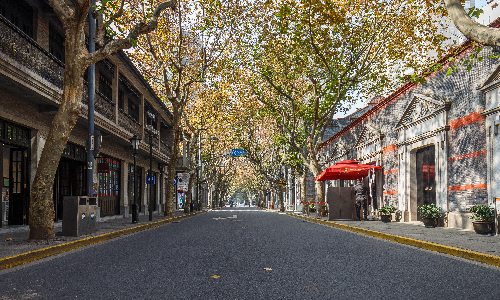
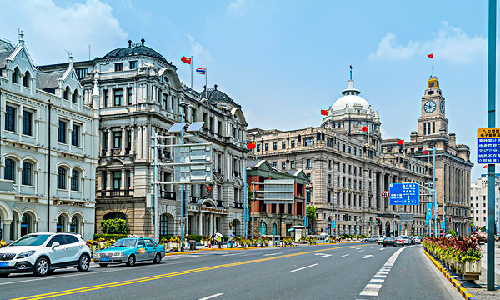
Today after breakfast, you will set out for Zhujiajiao Water Town. It takes about 1 hour (50 KM) to drive southwest to Zhujiajiao Water Town. If you are tired of the bustle and hustle of fast-paced modern life, Zhujiajiao Water Town is a good choice for you to experience the tranquility in small towns. It is time-honored (of over 600 years of history) and well-preserved. River and bridges are the classical elements of the typical Chinese water town, and small boats have been the only communication media for residents here. And today we will take a wooden boat to admire the town’s scenery. On the boat, you will see Fangsheng Bridge (free captive animals). It is the longest and largest stone bridge in Shanghai and gained this name because there were monks freeing captive fish on the bridge in ancient times on the first day in the Chinese Lunar Calendar. This town is quiet, and people here lead a simple life. You can spend a leisurely morning here.
Then you will have lunch in Zhujiajiao Water Town. After lunch, your tour guide will take you to drive northeast from the town to Shanghai Tower, and it will take about 50 minutes (51 KM). The Shanghai Tower has 128 stories and a height of 632 meters. It is the tallest of the world’s first triple-adjacent supertall buildings. Another two are the Jin Mao Tower and the Shanghai World Financial Center. Designed by the American architectural firm Gensler, Shanghai Tower resembles a flying dragon. You will take the superfast elevator to the sightseeing hall on the 118th floor. Here you will enjoy a panoramic view of Shanghai City. After visiting this tower, your guide will drive you to your hotel.
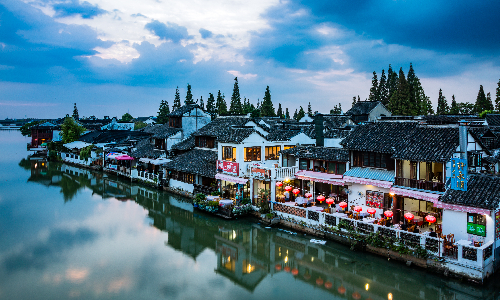

 Suzhou
Suzhou After breakfast, you shall check out and leave the hotel. We will take the estimated high-speed train G8264 08:25/09:01 to your next station Suzhou. Suzhou is an ancient city with a long history of 2,500 years and is known as “paradise on earth”. It is famous for its beautiful landscape and elegant gardens. Besides, Suzhou is an important economic, foreign trade, industrial, and logistics center of Jiangsu Province, as well as an important cultural, artistic, and educational center. Suzhou is the birthplace of one of the four Chinese famous embroideries -- Suzhou embroidery.
Today your first travel destination is Tiger Hill, a hill famous for its natural environment as well as historic sites. Tiger Hill is 34.3 meters above sea level and covers an area of 0.19 square kilometers. Its name comes from the overall shape of the hill that resembles a tiger. There are a lot of scenic spots here, among which Sword Pond (Jianchi) and Hanhan Well may attract your attention. Known as the most mysterious place in Tiger Hill, Sword Pond is believed to have 3,000 swords buried under the ground. As for Hanhan Well, it tells a story about a monk named Hanhan who suffered from eyes illness. The abbot in the temple of Tiger Hill felt pity for him and let him be a monk. Hanhan carried water from the foot of the hill to the temple every day. One day, Hanhan felt tired while carrying water and fell asleep, and then he dreamed of an eminent monk telling him that a fountain was in the exact place where he was staying. After he woke up, he started digging the well. After 47-day digging, the fountain emerged. Therefore, the well was named after Hanhan.
Then you will take a canal boat. The hull below the water is made of steel, but the outside is covered with wood, so the boat looks like a wooden one as a whole. The bow and stern are carved with decorations: the bow is mainly decorated with praying patterns, divine birds, etc. The stern of the boat is decorated with the totem image that keeps people safe and inlaid with jade. You can enjoy the beautiful scenery along the historical canal.
After lunch, you will visit Shantang Street which has a total length of 3,829.6 meters. In 2015, the scenic area was included in the “National Historic and Cultural Streets” in China. The buildings on both sides of Shantang Street are mostly buildings from the late Qing Dynasty and the Republic of China. There are also various souvenir stores on the street. If you plan to buy some gifts for your friends, I think you can get what you want there.
Then Humble Administrator’s Garden is waiting for you. Located on the Northeast Street of Gusu District, it is a distinguished representative of classical Chinese gardens. The curator of this garden named Xue Zhijian said, “there are four particular characteristics of this garden: the stone, the plant, the architecture and the water”, and through ingenious combination, the garden gives visitors a unique viewing experience. The garden includes three parts: Eastern Garden, Central Garden, and Western Garden, wherein the Central Garden is the essence. Interestingly, lotus is the highlight in the Central Garden, which stands for the character of unwillingness to go adrift. Your trip today then comes to an end and your guide will send you back to your hotel in Suzhou.


 Zhouzhuang
Zhouzhuang Hangzhou
Hangzhou This morning, your guide will help you check out and then drive southeast from Suzhou to Zhouzhuang in about 1 hour (53 KM). Zhouzhuang is located within the administrative area of Kunshan City, Jiangsu Province. It is well-known for its ancient residential houses and water town views. Meanwhile, there’s a lot of delicious specialty food, among which Wansan pork hock is definitely worth trying. The dish was used to be a must-have dish for tycoon Shen Wansan to entertain his guests. If you are a foodie, do not miss this delicacy.
After finishing the visit to Zhouzhuang and having lunch, we will move to Shanghai Hongqiao Railway Station from Zhouzhuang. The total distance is about 59 KM and will take about 1 hour. Then you will take the estimated high-speed train G7579 17:03/18:05 to the next station Hangzhou. And then your tour guide in Hangzhou will pick you up at the train station and send you to your hotel.
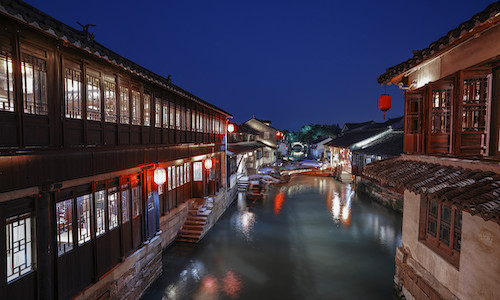

After breakfast, you will visit one of the most popular sightseeing spots in China: West Lake. In 2011, the scenic area was listed in the UNESCO World Heritage Site with the description of “reflecting an idealized fusion between human and nature”. The West Lake Scenic Area includes many temples, pagodas, and natural or artificial islands. In history, many poets have written poems about the lake, and the famous Chinese legend named Legend of Lady White also took West Lake as its background. If you heard about the Chinese Four Beauties, you may learn about Xi Shi, and West Lake is said to be her incarnation in nature. From there you can see, ancient Chinese people didn’t skimp on the beautiful words to praise West Lake. Today, you will take a small boat to appreciate the beauty of West Lake.
The next scenery spot is Six Harmonies Pagoda, a multi-story pagoda facing the Qiantang River. The pagoda was built in 970 by Qian Hong, the ruler of that area. It was destroyed and repaired several times in history. The pagoda is octagonal in shape, and it has thirteen stories in its appearance and seven stories inside. In local people’s minds, the Six Harmonies Pagoda is like a general. Because legend has it that, in ancient times the Qiantang River often flooded. To suppress the flood, the Six Harmonies Pagoda was built. So, it looks like a general standing beside the river and guides the local people from inundation.
After lunch, we will move to Feilai Peak. It is 168 meters high and the whole mountain is composed of limestone. The long-term groundwater dissolution created some fantastic and variously shaped caves here. According to the previous record, there are 72 caves in total but most had been covered over a long time of the natural process. Most of the few remaining caves gather on the southeast side of Feilai Peak. Besides, Feilai Peak also boasts strange rocks that resemble dragons, running elephants, crouching tigers, and agitated apes in shape. When you are standing here, you will feel like being in a stone-made zoo.
Then we will visit Lingyin Temple. It was built in 328 by a West Indian monk named Huili. During the peak time of Lingyin Temple, there are nine multi-story buildings, 72 halls, and over 3,000 monks. Exotic monks often came to Lingyin Temple to learn Buddhism. The Hall of Four Heavenly Kings is its formal entrance to Lingyin Temple. The hall is 24 meters deep and its main statue is that of the statue of Maitreya Buddha (or the Laughing Buddha). The Maitreya Buddha is topless on a rush cushion, with a smiling face. The Four Heavenly Kings are arranged along its left and right, whose majestic size will impress you. Then today’s journey comes to an end and your guide will send you back to your hotel.
Tip:
West Lake Longjing Tea is one of the top ten famous teas in China and was first produced in the Song Dynasty. West Lake Longjing Tea is quite unique: green in color, fragrant in smell, sweet in taste, and beautiful in shape. Premium West Lake Longjing Tea was the article of tribute in ancient times. The effects of drinking Longjing Tea are as follows: it helps people to invigorate and relieve fatigue; it is a diuretic and can be used to treat edema; it can regulate fat metabolism and help people lose weight. If you are looking for substitute goods for coffee, you can try the West Lake Longjing Tea. It will bring you a new experience.
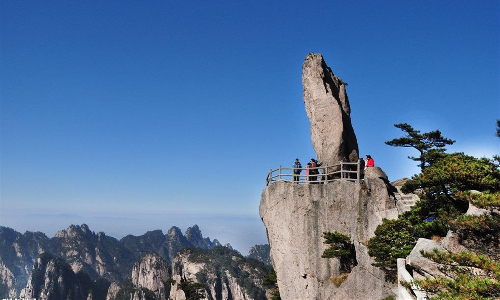
 Huangshan
Huangshan After breakfast, you will take the estimated high-speed train D5577 09:00/10:51 to Huangshan. Then your guide will pick you up and drive south from Huangshan North Railway Station to Tunxi Ancient Street in about 30 minutes (15.4 KM). Then you will go sightseeing here. It is a pedestrian street. The total length of the street is 1,272 meters with 853 meters as its essence. It was first built more than 700 years ago in the Song Dynasty (960-1279). Now the buildings have the characteristics of the Ming (1368-1644) and Qing Dynasties (1636-1912). The two sides of the street are paved with slab stones. On the street, you can find shops selling writing brushes, ink stones, local tea, etc.
After sightseeing, your guide will send you back to your hotel to have a good rest.
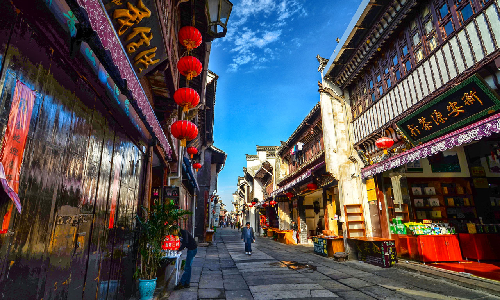
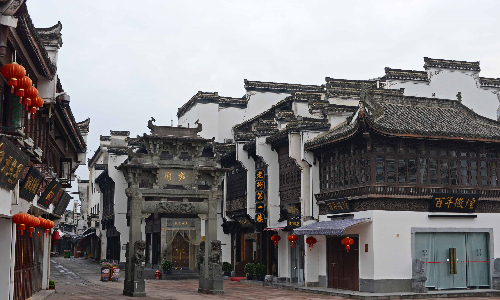
After breakfast, your guide will transfer you from Huangshan city to the Yellow Mountain in 1 hour (59 KM). It is located in southern Anhui province, China. It was a UNESCO World Heritage Site. The breath-taking scenery including sunsets, distinctively shaped Huangshan pine trees, various peaks, hot springs always impresses tourists from home and abroad. It has thus become a popular place for painters, photographers as well as novelists. The vegetation here varies with elevation: from the foot of the mountain to the top, there is evergreen broad-leaf forest (below 1,100 meters), deciduous forests (from 1,100 meters to 18,00 meters), and alpine grasslands (above 18,00 meters). The moist climate in this area helps tea leaves grow, and the mountain is acclaimed as “one of China’s premier green tea-growing mountains”. Over the past years, many scenic spots on the mountains have been named. “Beginning-to-Believe Peak” comes from the legend that a man who was doubtful about Yellow Mountain’s beauty and then went to the mountain, and he immediately changed his mind. Thus, one of the peaks he visited was later called “Shixin”, meaning “begin to believe”.
When you arrive at the Yellow Mountain, the first scenic spot catching your eyes is Yungu Temple. It is located in the southeast of the Yellow Mountain, with an altitude of 890 meters. It is basically the only place from which you can enter the major scenic area through the southern gate of the Yellow Mountain. Here you will take the Yungu cable car to reach Beginning-to-Believe Peak, and many famous Huangshan pines are gathered here. Then you can overlook the West Sea Grand Canyon. After that, you will move on to Dispelling Cloud Pavilion. Next, you will see Flying-over Rock: a boulder stands on a rocky platform. The contact surface between the two rocks is quite small. It looks like the boulder is flying to the platform. Hence the boulder is named “Flying-over Rock”. Finally, you will climb to Bright Summit, which is one of the three main peaks. It is located in the middle of the Yellow Mountain and has an altitude of 1,841 meters. Because it is high and can provide a wide horizon and has a long sunshine duration, it is one of the best places to watch sunrise, sunset, and sea of clouds on Yellow Mountain. Then you will check-in at a hotel in Bright Summit, where you can enjoy the sunset and the evening glow.
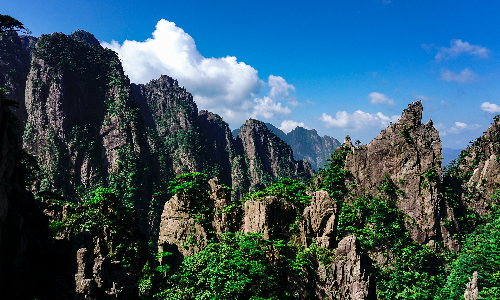

Today you will get up early and watch the sunrise on Yellow Mountain. Then you will walk to the Dawn Pavilion and visit a distinctively shaped stone named Stone Monkey Watching the Sea. The stone monkey stands alone on the top of the peak as if it is looking far away, and it looks like it is going to jump into the sea of clouds. Then you can walk to the cable car station and take the cable car down the mountain. Your guide will transfer you to Huangshan city in 1 hour (59 KM). And then you will be transferred to the hotel for a good rest.
 Beijing
Beijing After breakfast, you will visit Hongcun Village. Your guide will drive you northwest to Hongcun Village in about 90 minutes (62 KM). Hongcun Village is a traditional village covering an area of 19.11 hectares. In 2000, it was listed as a UNESCO World Heritage Site together with Xidi Village. Many scenes of the famous film Crouching Tiger, Hidden Dragon were shot here. The shape of the village resembles an ox: Leigang Hill as the head, and two trees standing on the hill as ox horns, four bridges as its legs, and the village houses as the body.
After lunch, we will drive south from Hongcun Village to Xidi Village in half an hour (20 KM). It is a traditional Chinese village that covers an area of 10.7 square meters. Xidi Village is in the shape of a boat including a longitudinal street and two streets along the river. There are more than 300 residential buildings from Ming and Qing Dynasties in Xidi Village, of which 124 are well-preserved and have unique styles. The typical residential buildings in this village adopt blue tiles and white walls. That makes the scenery in Xidi Village look like a Chinese painting.
After the visit to the village, we will drive southeast to Huangshan Airport in 1 hour 10 minutes (50 KM). You will take the estimated flight CA1552 21:15/23:25 to Beijing, and then your Beijing guide will pick you up and send you to your hotel.
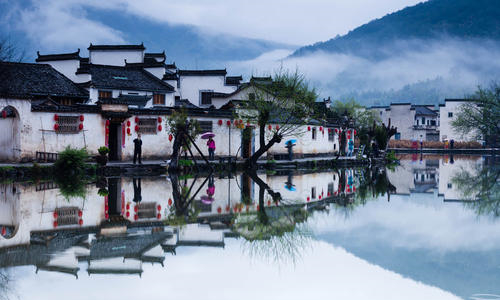
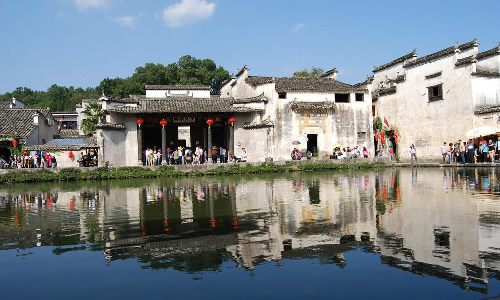
Today after breakfast, we will go to Tian’anmen Square. It is located at the center of Beijing and can accommodate 1 million people for grand gatherings. During the Ming and Qing Dynasties, it was a palace square outside the main entrance of the Forbidden City. Now the square is the place for many important events. For example, on the morning of July 1, 2021, the celebration of the 100th anniversary of the founding of the Communist Party of China was held here.
Then you will visit the Forbidden City (closed each Monday), also named the Palace Museum next to Tian’anmen Square. Surrounded by Zhongshan Park, the sacrificial Imperial Ancestral Temple, Beihai Park, and Jingshan Park, it was constructed between 1406 and 1420 and was the imperial palace of the 24 emperors of the Ming and Qing Dynasties in China. The Chinese name of the Forbidden City is Zi Jin Cheng. “zi” means “purple” and refers to the North Star which was regarded as the star of the emperor in ancient China. “Jin” means “forbidden”, implying that people are forbidden to leave or enter the place freely except for getting the emperor’s permission, and “Cheng” means palace. From its Chinese name you can see, the Forbidden City symbolized the emperor's authority at that time.
The Forbidden City is divided into two parts. The Outer Court is mainly for ceremonial purposes such as coronations and imperial weddings. And most of the time, emperors will meet the ministers at the halls in Out Court to deal with the government affairs. The Inner Court is mainly for the emperors and concubines to live. Before you walk into the Inner Court of the Forbidden City, you will see two lion statues with their ears drooping. That means to warn the concubines in the inner part not to pry into the government affairs in the Outer Court.
After lunch, you will visit the Temple of Heaven. It covers an area of 2,700,000 square meters and is enclosed by a long wall. It was the place for emperors to offer sacrifices to heaven and pray for good harvests during the Ming and Qing Dynasties. In 1998, it was listed as a UNESCO World Heritage Site. Here you will learn about the process of sacrificial offerings in ancient China through different buildings. In addition, there are more than 3,500 ancient trees in the Temple of Heaven, and the environment is very quiet and pleasing. Even if you are not a Chinese history lover, the environment here will allow you to enjoy a pleasant afternoon.
And then you will have close contact with Beijing Hutong, a type of small alleys mostly seen in Beijing. You will take a rickshaw and visit the Hutong. The buildings in Hutong are mostly quadrangle courtyards (Siheyuan). We will take you into an old quadrangle courtyard and you can learn about the life of traditional Beijing residents including their lifestyle, aesthetic taste, and neighborhood relationships. After today’s visit, your guide will send you back to your hotel.
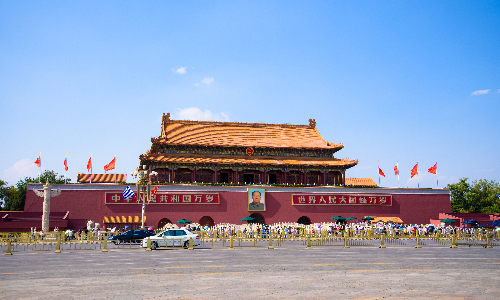
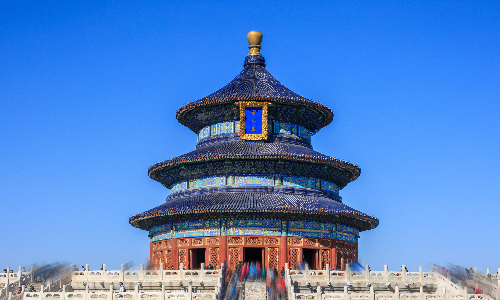
After breakfast, your guide will drive you northwest from central Beijing to Ming Tombs in about 1 hour (56 KM). It covers an area of 120 square meters. There are thirteen emperors in Ming Dynasty buried here. The Ming Tombs was listed as a UNESCO World Heritage Site in 2003. By now, only three tombs are open to the public. One of them, Ding Tombs is the tomb of Emperor Wanli and his two empresses. At present, it is the only tomb that has been excavated. Visitors can see thousands of items unearthed from the tomb including silk, wood, porcelain, textiles, crown, and so on. In addition, you will have a chance to walk into the underground of the Ding Tomb. Your guide will introduce the tomb structure to you and you will know more about the ancient Chinese royal funeral culture.
After having lunch, you will visit Mutianyu Great Wall. Your guide will drive you northeast from Ming Tombs to Mutianyu Great Wall, and it will take about 1 hour (44.5 KM) to get here. Mutianyu Great Wall is the longest section of the Great Wall. Due to its critical geographical location, it has been a military center for guarding Beijing since ancient times. It enjoys a long history and was first built in the Northern Qi Dynasty (550-557) and then was rebuilt during the Ming Dynasty. Mutianyu Great Wall is famous for its wonderful scenery and fantastic architectural structure. You will take the cable car or chairlift up to the Great Wall and then have a closer look at the Beacon Towers, crenels, and bricks on the Great Wall. If you want to get a more exciting experience, you can take the toboggan down. (Please note that toboggan is not available for visitors over 60 years old).
After your visit, you will go back to Beijing. On the way back you will stop at Water Cube and Bird’s Nest where you can take some photos. They were the venue of the 2008 Olympic Summer Games and are famous for their special architectural style. You can take some photos outside. Then your tour guide will send you to your hotel.
Options:
Enjoy Peking Roast Duck
It is a famous Chinese cuisine, and when you come to Beijing, you must taste the authentic Peking Roast Duck! The cuisine is well-known for its tempting color and tender meat. It can light up your taste receptors right now! It is said that Premier Zhou Enlai preferred this dish, and he also treated his foreign guests with it. As time goes by, Peking Roast Duck has gained a good reputation at home and abroad and enjoyed great popularity.
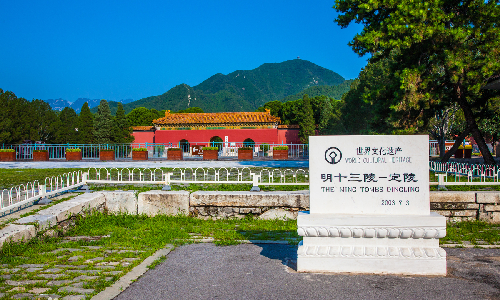

Today your journey in China comes to an end. We will transfer you to the airport according to your flight. Any suggestions from you are welcomed and we are looking for serving you next time!
Author: Shijin Chang
Proofreader: Betsy He
| City | Five Star hotel list | Four Star hotel list |
|---|---|---|
| Shanghai | Ocean Hotel Shanghai | Courtyard by Marriott Shanghai Central |
| Suzhou | Grand Trustel Aster Hotel Suzhou | Suzhou Jasmine Hotel |
| Hangzhou | Landison Plaza Hotel | Best Western Plus Meiyuan Hotel Hangzhou |
| Huangshan | Huangshan International Hotel | Huangshan International Hotel |
| Beijing | Sunworld Dynasty Hotel Beijing Wangfujing | Sunworld Hotel Wangfujing |
 |
![]() About your child or infant, please contact us for a discounted price.
About your child or infant, please contact us for a discounted price.



We started with a few days in Beijing & ended in Shanghai, from where we visited the Forbidden City and Great Wall. In between we visited Terra Cotta Warriors Museum, Panda Base, Shanghai Disneyland.

We had a wonderful holiday in China which will remain long in the memory. China is a breathtakingly beautiful country full of splendid temples and palaces, mountains and rivers, peaceful rural scenes and bustling shopping streets.
 QUICK ENQUIRY
QUICK ENQUIRY